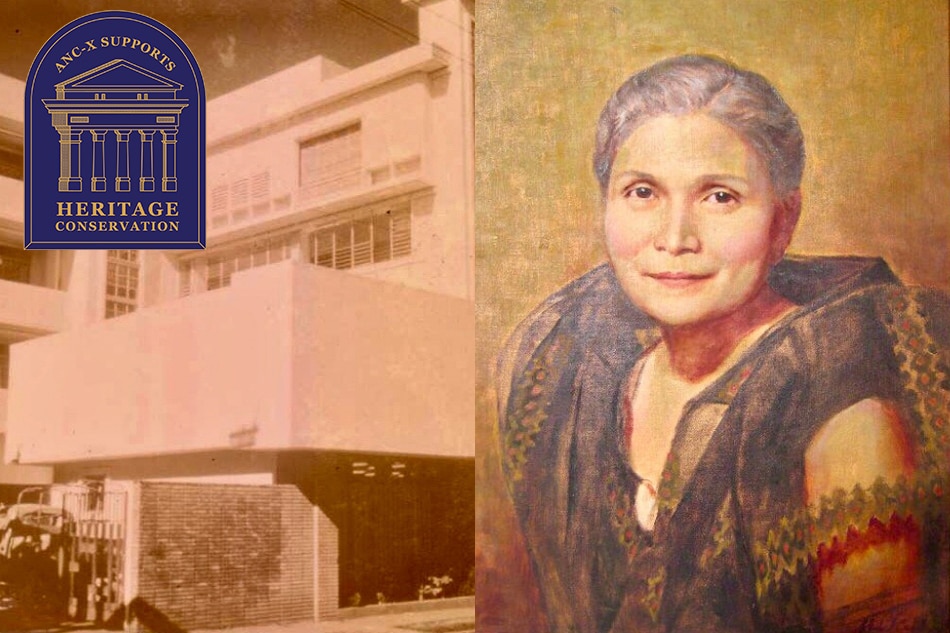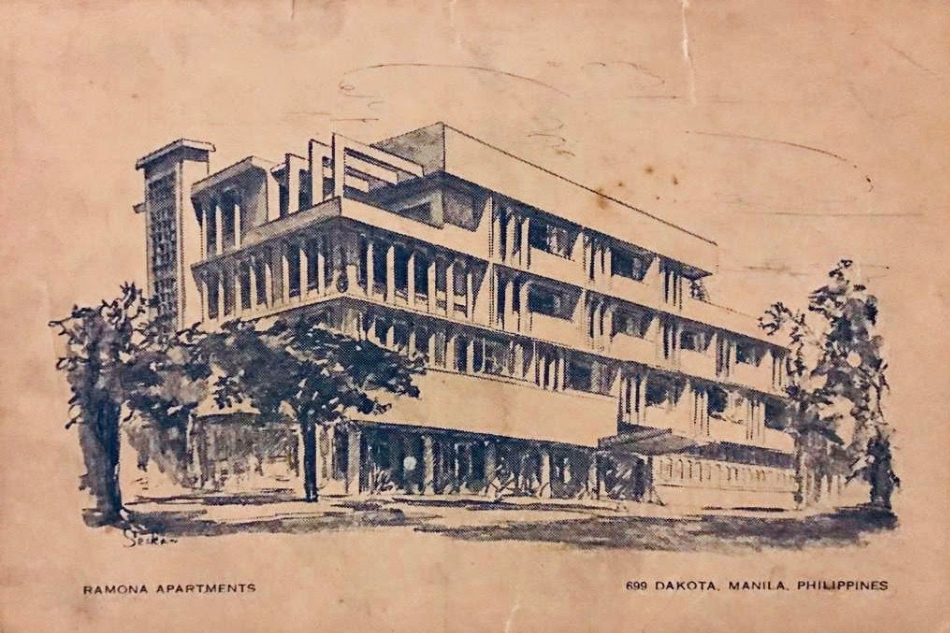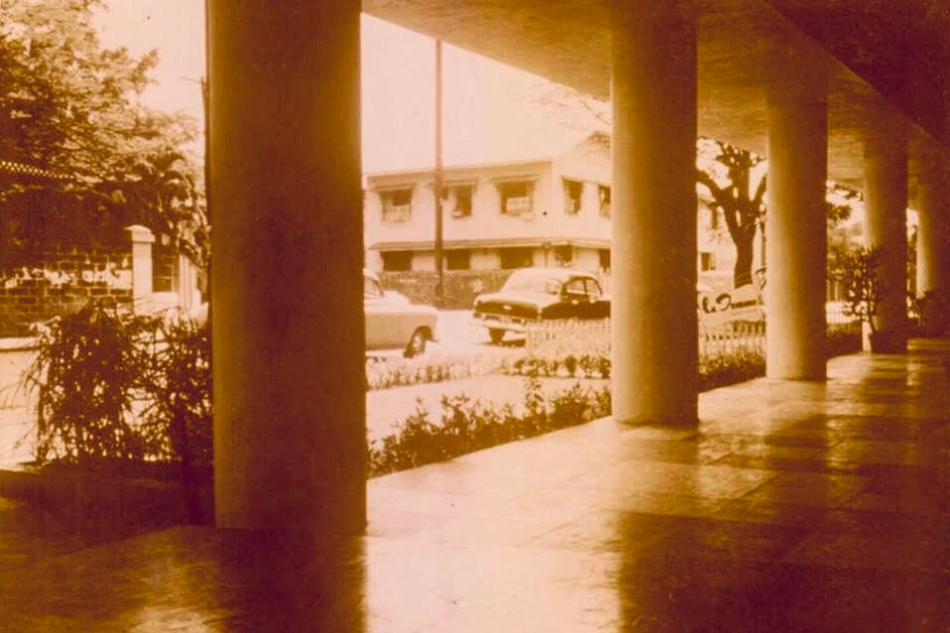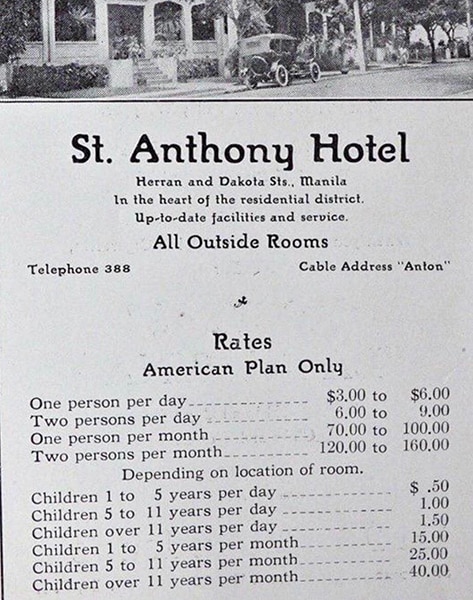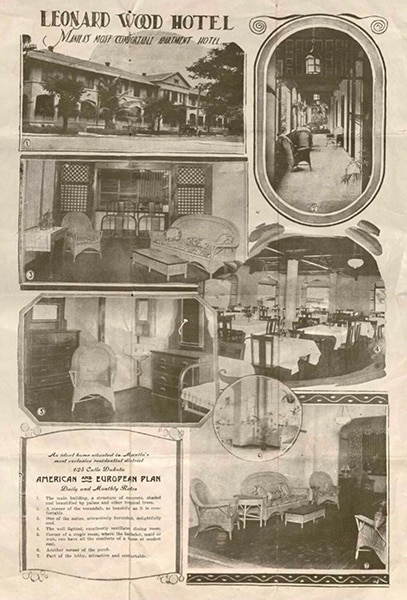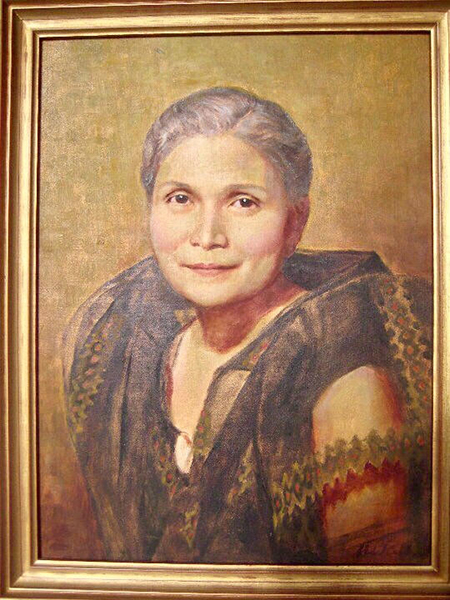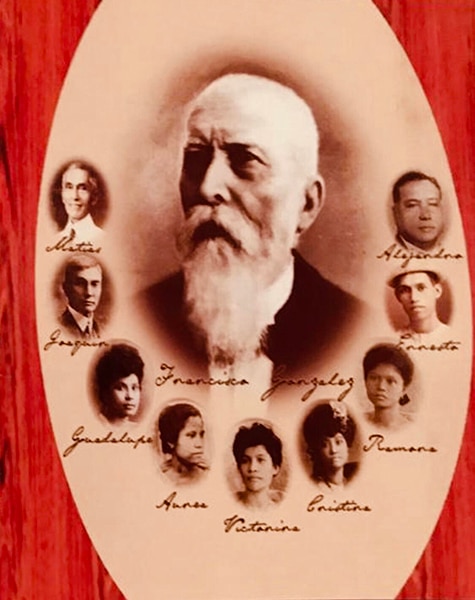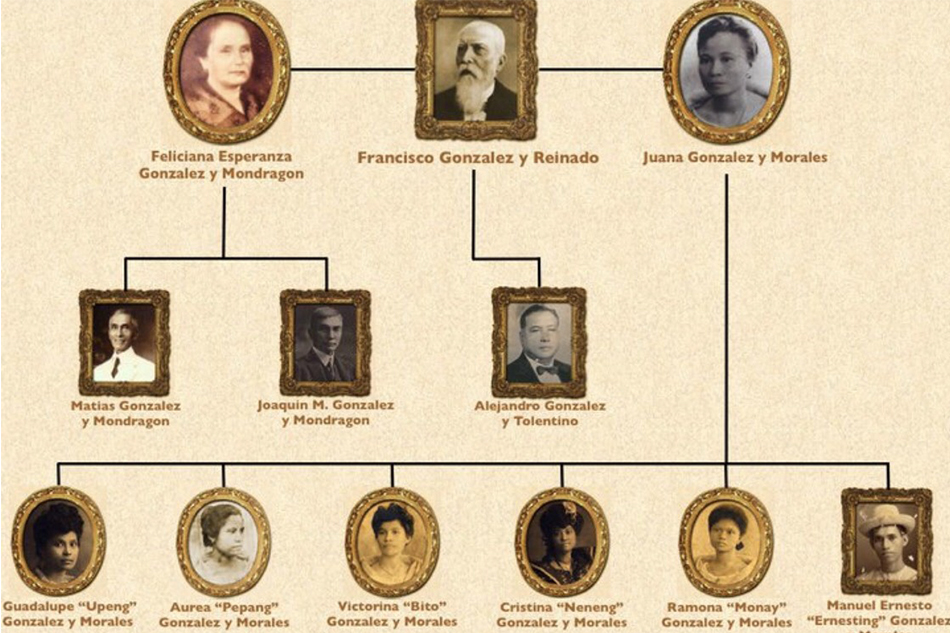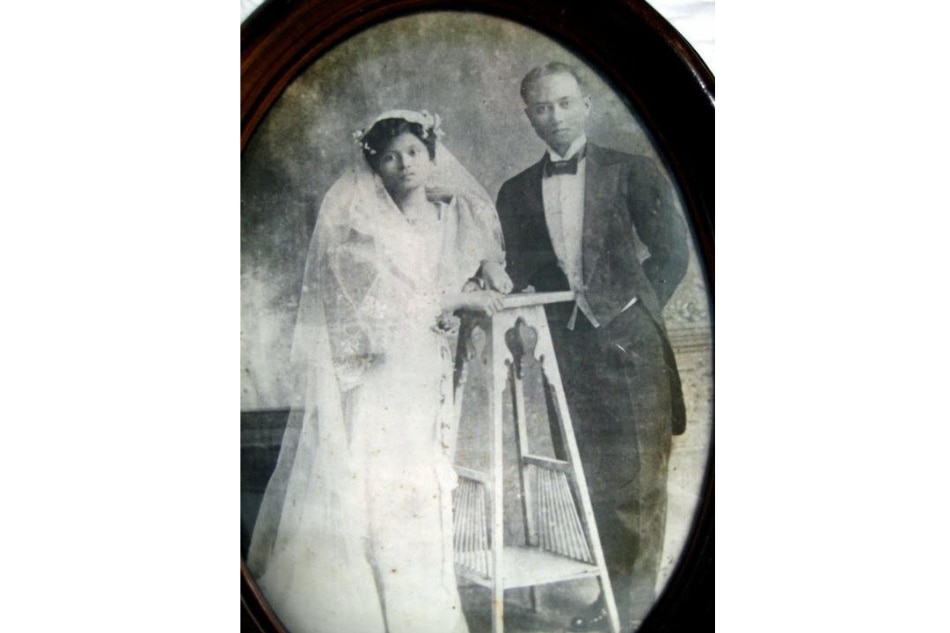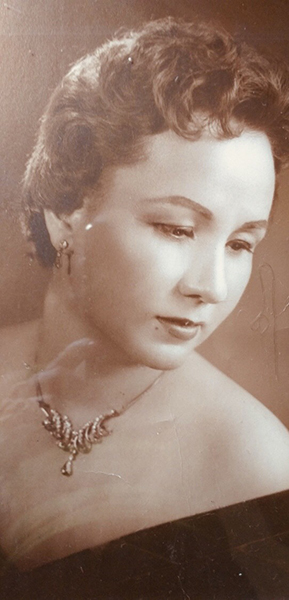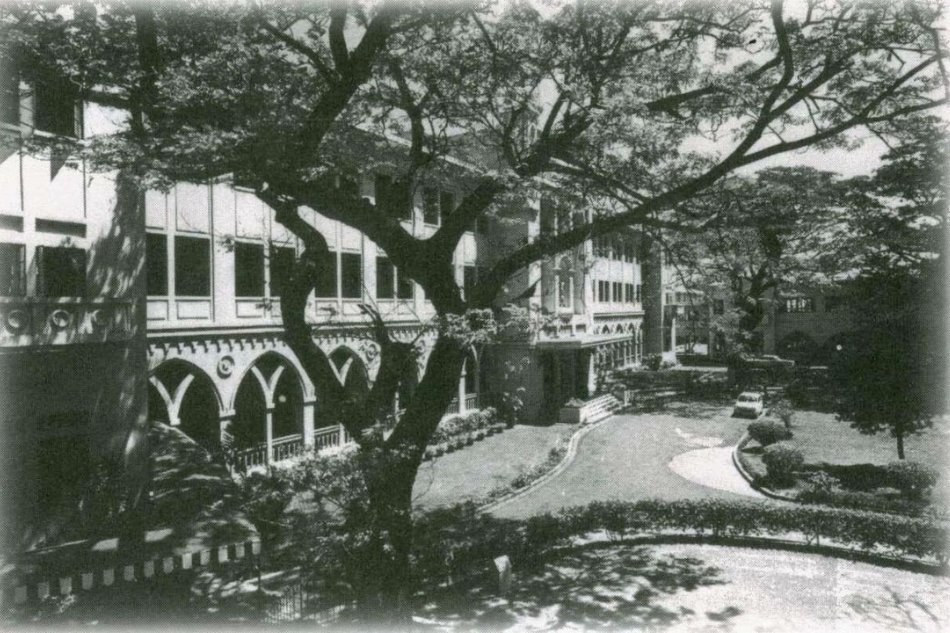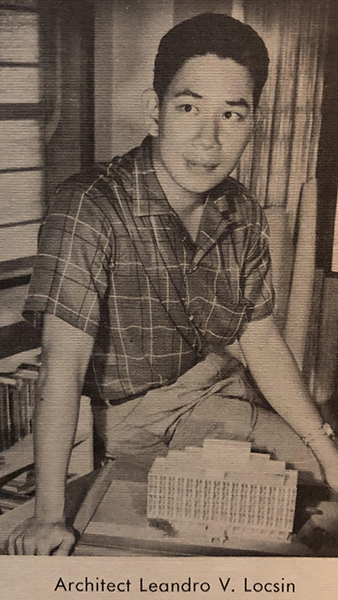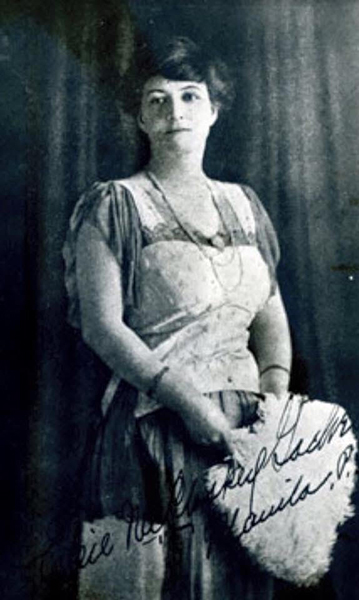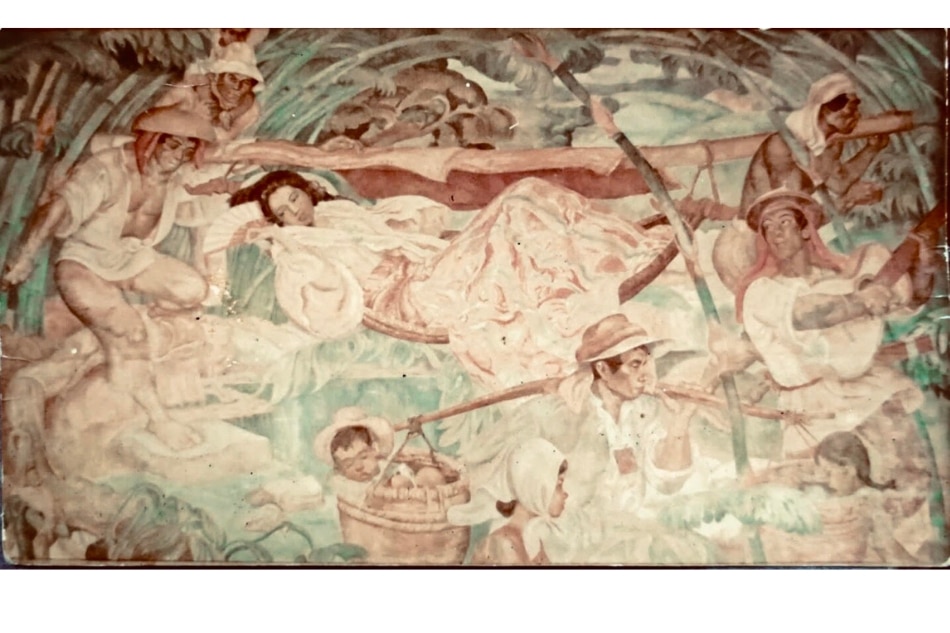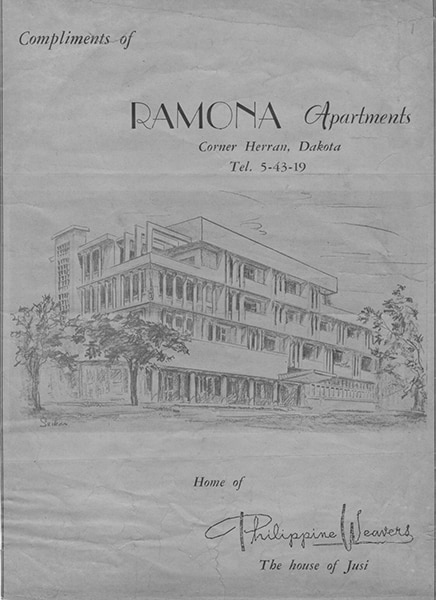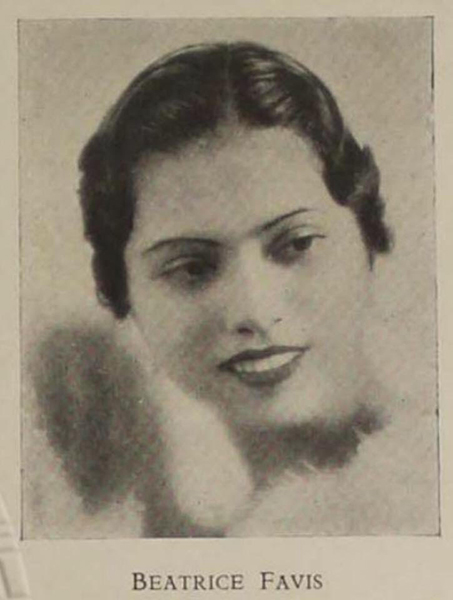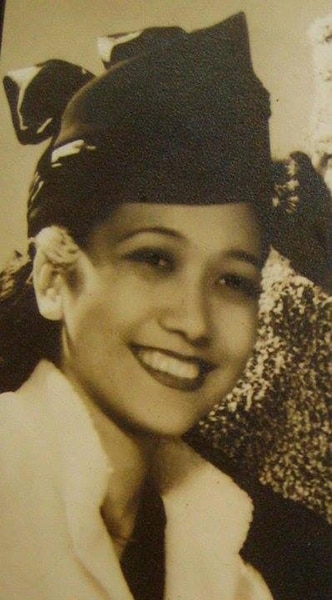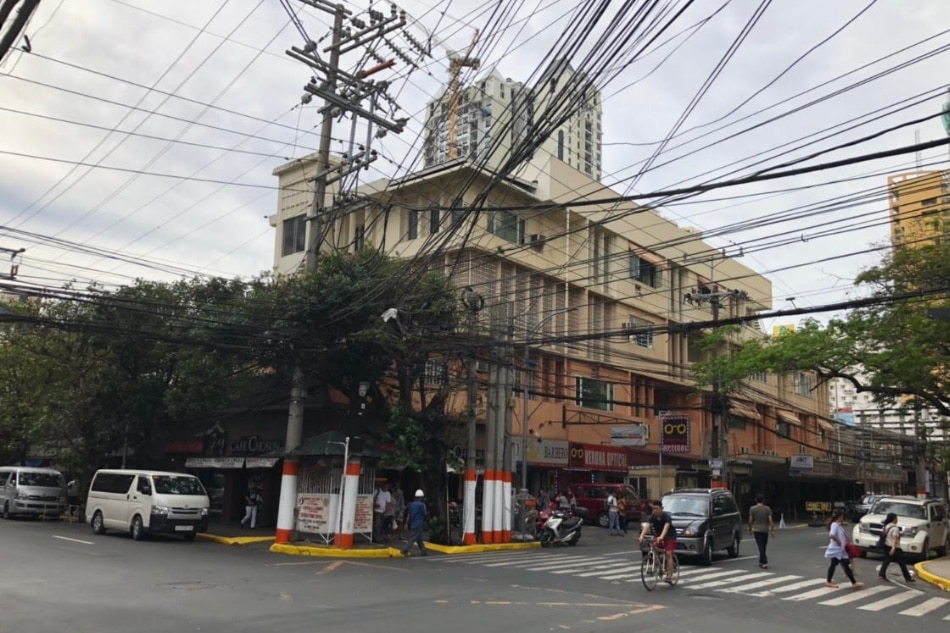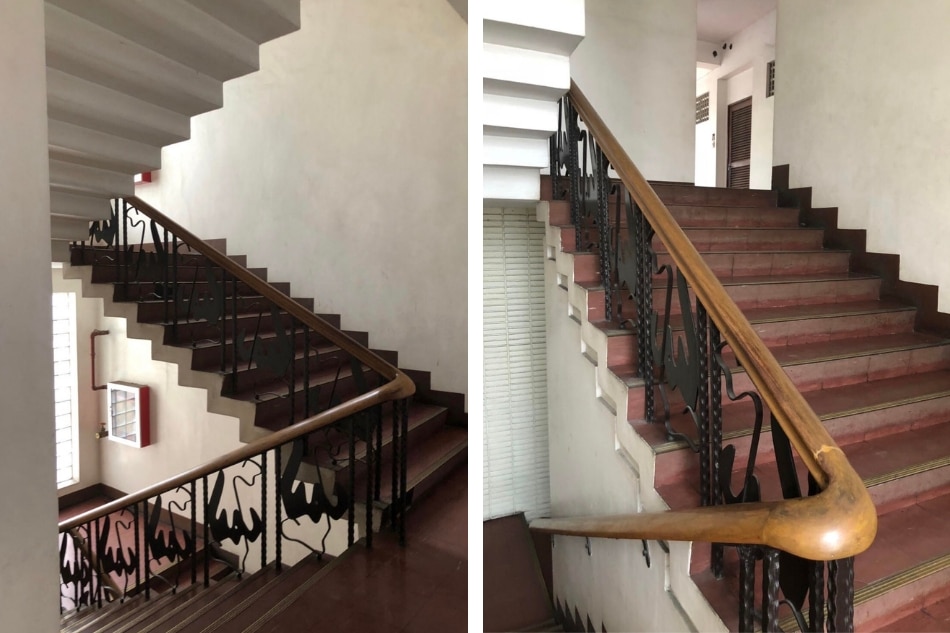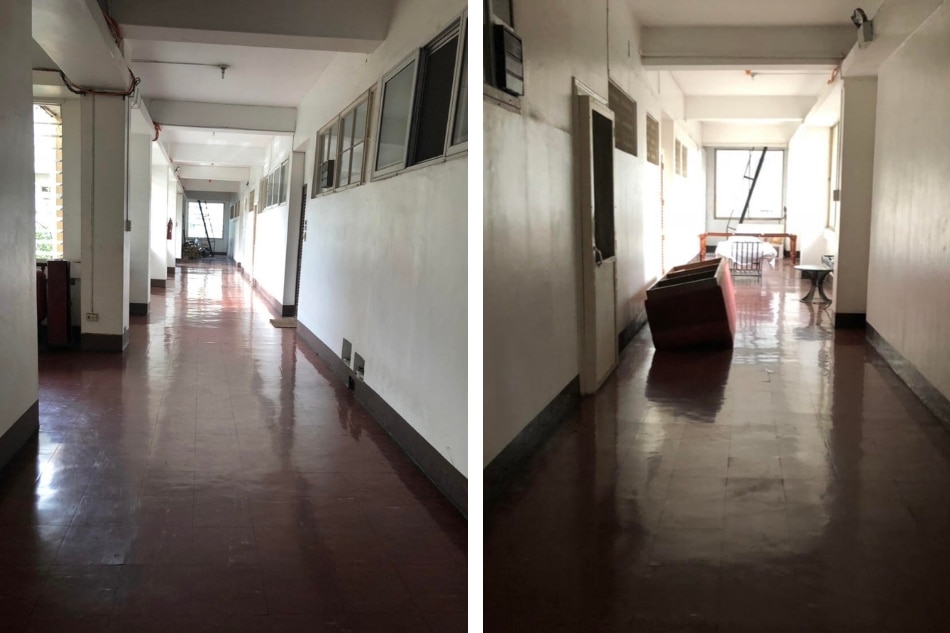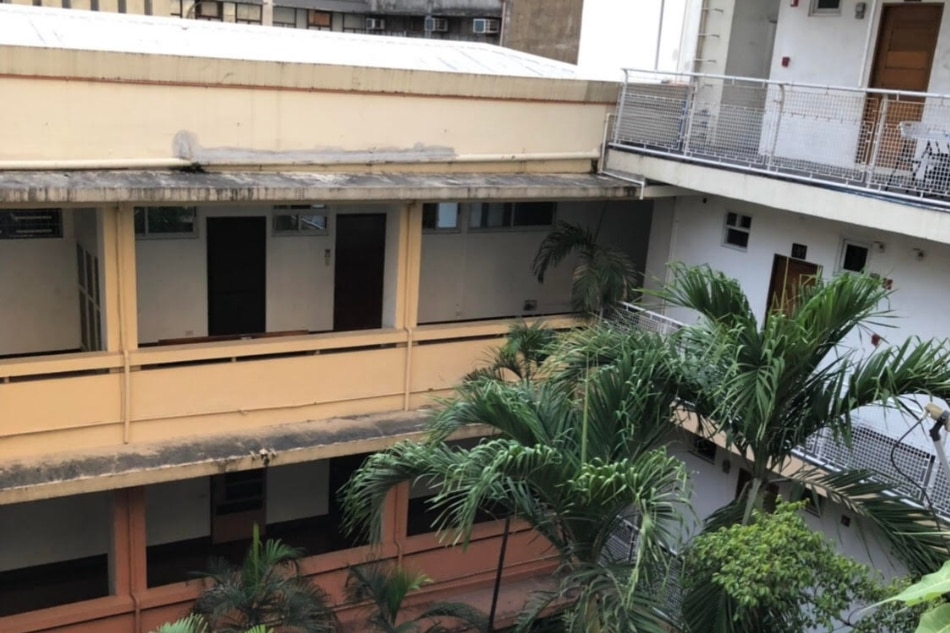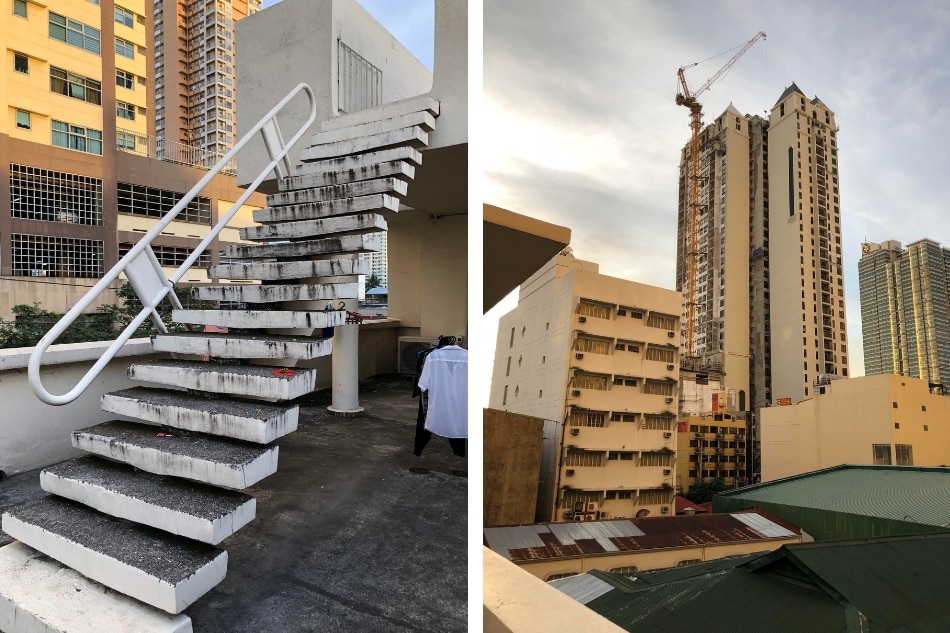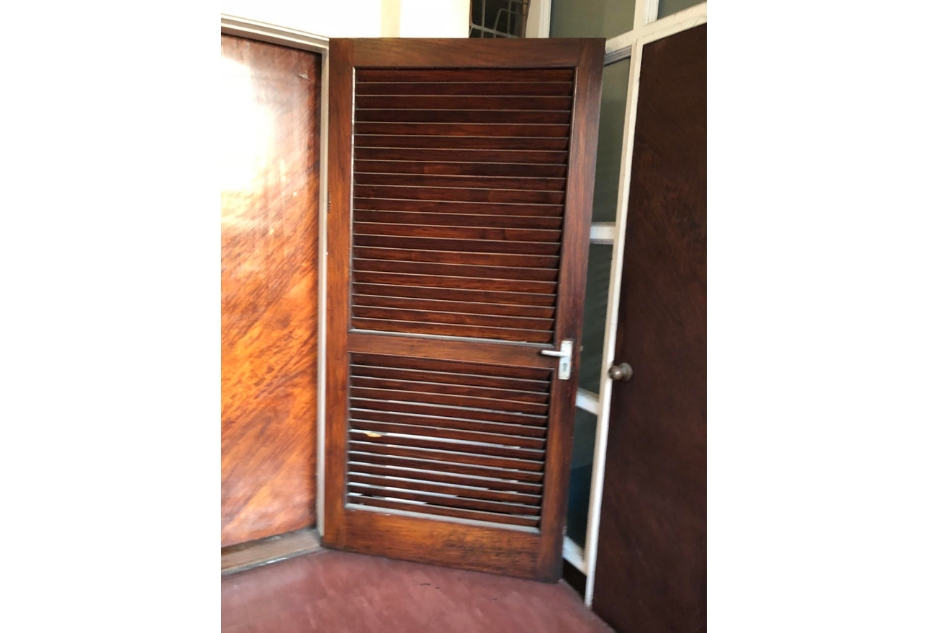Ramona Apartments, located at the corner of M. Adriatico and Pedro Gil Streets (formerly Dakota and Herran Streets) in Ermita, Manila, was built in 1949 on a 2,594 square-meter lot. It was acquired for Php 10.00 per square meter after the war and was the former site of Kneedler Realty’s Leonard Wood Hotel and, before it, the St. Anthony Hotel. The Leonard Wood Hotel was used as a hospital during WWII and was later completely destroyed by the Japanese forces.
Renowned architect, Cesar H. Concio, at that time head of Mapua Institute of Technology’s Department of Architecture, designed Ramona Apartments in the then current Post-War International Style (he would later design the Redemptorist Church in Baclaran, Palma Hall, Melchor Hall, and the Church of the Risen Lord in U.P. Diliman, and the Insular Life Building in Makati). The building is typical of Concio’s architecture which is described in the CCP Enyclopedia of Art as “a rational approach to design, resulting in logically arranged spaces, neatness of form, and a successful adaptation to climate.”
The Ramona had ample ventilation and natural light, achieved by having the apartments and corridors face an open courtyard from which grew palm and ficus trees three storeys high. The four-storey reinforced concrete building, including the rooftop and penthouse, was a mixed commercial and residential edifice commissioned by the late Doña Ramona “Monay” Gonzalez vda. de Favis, daughter of Don Francisco “Balbas” Gonzalez y Reinado by his second wife, Doña Juana Morales y Macaraeg.
The original owners
Don Francisco, an agriculturist whose family hailed from Baliuag, Bulacan, owned Hacienda Esperanza in Bautista, Pangasinan, named after his first wife, Esperanza Mondragon. According to the book, Pangasinan: 1901-1986: A Political, Socioeconomic, and Cultural History (1990), Hacienda Esperanza, which covered 39,000 hectares, was considered the biggest privately owned landholding in the Philippines, spanning the provinces of Pangasinan, Tarlac, and Nueva Ecija. Doña Ramona was married to Asterio Favis y Flandes of Vigan, Ilocos Sur, one of the first government pensionados during the American Colonial Era. He studied law at Georgetown University in Washington, D.C. and was writer, English section editor, and managing editor of The Filipino, a publication of Filipino pensionados in the U.S. Upon his return to the Philippines, he became Fiscal of Mountain Province, and had a private law practice in Pangasinan.
He and Doña Ramona were only married six years when he caught smallpox and died in 1918, leaving her a widow with four young children to raise on her own: Asterio, Jr., Beatriz, Cecilia, and Teresa. Later, Asterio, Jr. married Remedios “Medong” Ledesma; Beatriz married Beda Juan Medina Gonzalez; Cecilia married José Gonzalez Gomez; and Teresa married Federico Abello Olbés.
In its earlier days, the Ramona Apartments, which faced the beautiful tree-lined former campus of Assumption Convent Herran, was one of the most sought-after apartment buildings. It once housed the Luz Gallery, owned by painter Arturo Luz and his mother, the interior design doyenne, Doña Rosario Luz; the architectural office of Leandro V. Locsin; the office of interior designer Evelyn Vales Garcia; the swank Lord & Lady Chips owned by Far Eastern Travel Agency owner, Johnny Limjuco, and his wife, ELPO heiress, Leonie Geronimo Limjuco; Remedios Ledesma Favis and Beatriz Favis Gonzalez’s Philippine Weavers; Presy Psinakis’ Sierra Tours and Travel; Mrs. Asuncion "Chating" Franco Fernandez’s La Femme Salon de Beauté; the furniture showroom of Joaquin Imperial; Mel Meer’s Bergamo; and Lourdes Perez del Rosario’s Spanish restaurant, El Comedor.
The Ramona had quite an interesting cast of residents as well. Consisting of a total of nineteen flats—nine on the 2nd floor, eight on the 3rd floor, a penthouse suite and a guest flat on the 4th floor—the building housed not only members of Doña Ramona’s family but other intriguing personalities. Among these characters were the reclusive philanthropist, Mrs. Elsie McCloskey Gaches, widow of Heacock’s Samuel Gaches and benefactress of Elsie Gaches Village (she was one of the building’s first residents); the prominent lawyer Honorio Poblador, Jr.; Rene Knecht who occupied the penthouse’s guest flat; the late newscaster Bong Lapira; President Cory Aquino’s Presidential housekeeper Fritzi Ruiz Aragon; Alice and Viring, daughters of Maria Castro Espinosa, a.k.a. Madame X; international newscaster Veronica Pedrosa; and doctors who worked at the World Health Organization.
From her penthouse aerie reigned Doña Ramona herself, matriarch of the Favis-Gonzalez-Gomez-Olbés clan, several members of which spent their formative years in the building, spread their wings, then went back to raise their families there.
The religious Ramona
Doña Ramona loomed large in the lives of her children and grandchildren. A very religious lady, she was a devout member of the Carmelite Third Order. She brought her family together by praying the rosary daily, and in the 1950s would house Carmelite missionaries in three of the building’s ground floor units during the group’s trips to Manila. As recounted by her late daughter, Cecilia Favis Gomez, in an interview published in Metro, February 1990 issue, Doña Ramona was running out of funds during the construction of the building when she was visited by Carmelite sisters. After their visit, money started pouring in, allowing her to finish the edifice. It was Doña Ramona’s devotion to the Carmelite Order which led her back to the Catholic faith after she stopped attending church for many years—she lost her faith after she was widowed in 1918.
During the Ramona Apartments’ heyday, she ran the building efficiently and was a stickler for cleanliness and order. The Belgian tile floors were always clean and polished. No expense was spared in the construction of the building which used high-grade concrete, Narra for the doors and Narra handrails for the staircase, bathroom fixtures imported from the U.S.—this according to Ramona’s granddaughter, Teresita “Ters” Favis Olbés. Ters and her brother, the tall and elegant Federico Olbes, are the main sources of information for this story. The two sat down with us late last year after we requested for an interview regarding the building's history.
The interiors of Ramona Apartments were originally designed by Berenguer-Topacio, one of the top interior design and furniture firms in Mid-Century Modern Manila. Highlighting the building’s lobby was a beautiful mural commissioned by Doña Ramona entitled, Hamaca, painted by Carlos “Botong” V. Francisco from 1950 to 1951. In the 1970s, the said mural was acquired by the late Architect Leandro V. Locsin, one of the building’s earlier tenants.
In the early 1960s, Doña Ramona bought properties in exclusive villages in suburban Makati for herself and for each of her four children. For herself, Doña Ramona built a residence in North Forbes Park, moving there in 1965. She sent her grandson, Federico, to Europe where he stayed for ten years while his sister, Ters, also went to Europe to study, work, and travel. Ters worked at the Luz Gallery at the L.V. Locsin Building in EDSA, Makati for a year then left for Spain for a few years while Federico worked with Times Journal upon his return to Manila. He became Ramona Apartments’ building administrator from 1983 to 2010.
Cecilia Favis Gomez’s daughter, Maita, would become a much sought-after Pitoy Moreno model, joining his fashion shows abroad, and representing the Philippines in the Miss World Pageant in London in 1967. She married Carlos “Cookie” Perez Rubio in 1968, lived in Philadelphia and New York with him for a time, settled in San Lorenzo Village, and gave birth to her daughter, Melissa, in 1970. Thereafter, she resumed her Pre-Med studies, later shifting to A.B Philosophy, in U.P. Diliman, then the bedrock of activism. After getting deeply involved with the left and with the onset of Martial Law, she left her husband who did not approve of her activism. She famously went underground, and resurfaced after being captured and placed under house arrest. She had four more children: Luis, Antares, Kris, and Michael. She organized WOMB and GABRIELA, ran for representative of the 5th District of Manila under Abanse Pinay and lost. She took up an M.A. in Developmental Economics in U.P., worked in MERALCO, and taught in La Salle and U.P. She lived in Ramona Apartments together with her mother, Cecilia, and her children for several years, moving out shortly before her passing in 2012.
The fight over the administratorship
With Doña Ramona’s failing health came the passing of the guard at the building. She stayed in a hospital suite at the Medical Center Manila for eight years and management of the Ramona was taken over by her only son, Asterio Favis, Jr. After Doña Ramona’s demise in 1983, estate proceedings were filed at the Makati RTC. Mrs. Teresa Favis Olbes and Mrs. Beatriz Favis Gonzalez were appointed as co-administratrices of the estate on October 25, 1983. When Beatriz went on an extended trip abroad to accompany her husband for medical treatment, Teresa Favis Olbés filed a motion to remove Beatriz as co-administratrix, citing her long absence and her differences with Beatriz in administering the estate. Teresa’s motion was granted and she became sole administratrix of the estate.
Asterio, Jr. resisted turning over the administratorship to Teresa while his sisters, Beatriz and Cecilia, contested Beatriz’s removal. After losing in the lower court, Beatriz gave way while Cecilia went to the Court of Appeals and lost again. Teresa’s son , Federico, then took over as Ramona’s building administrator in 1983. He proposed to run the building professionally by charging theoretical rents to the heirs staying at the building and deducting these theoretical rents from their dividends. After Teresa passed away, administratorship passed to the three families, Olbés, Gomez, and Gonzalez. Federico Olbés was retained as building administrator until Mrs. Cecilia Gomez’s daughter, Carmen, got the sole administratorship with Beatriz’s passing and took over the building’s administration.
According to Federico, perhaps expecting some resistance from him, the Gomezes came in one day with 20 guards and four policemen. Two security guards were posted outside Federico’s flat. Two weeks after Carmen took over, however, a very strange thing happened. At 5:30 am, while on her way back to bed from her bathroom, Mrs. Cecilia Gomez of Flat No. 250 witnessed her own bed burst into flames, an apparent case of spontaneous combustion. Flames came out the windows and firemen came in training their hoses on the flames. Water flooded the hallways and cascaded down the staircases. Strangely, the billowing smoke stopped short of Federico’s Flat No. 210, allowing him and his son to emerge safely. Shortly after, Doña Ramona appeared to Ters’ daughter, Martina.
Many years after her passing, Doña Ramona is still a strong presence at Ramona Apartments. According to Ters, roving guards have reported the rhythmic sounds created by the rustling of Doña Ramona’s big rosary beads which in her lifetime signified her presence. There are also stories of footsteps walking back and forth emanating from Doña Ramona’s penthouse suite. She still appears every now and then, say the Olbes siblings, hovering over the place she built herself and reigned over for so many years.
In the course of the family feud which lasted for several years, starting in the early 1980s, some of Doña Ramona’s heirs were able to negotiate Ramona Apartments’ sale to Mirobeni Property Holdings, Inc. which also purchased the nearby Elena Apartments from the heirs of Don Vicente Lopez (the building has since been demolished). After struggling to resist the sale of their co-owners’ shares, Federico and Ters Olbés, heirs of their mother, Teresa Favis Olbés, decided to sell their shares to avoid further conflicts with their co-heirs. Both left their beloved Ramona Apartments, with all the beautiful memories attached to it, with heavy hearts. Mirobeni Property Holdings, Inc. has since sold the property to a Chinese businessman who ordered the building’s longtime tenants and residents to vacate the building prior to its scheduled demolition this March to give way to the construction of a 72-storey condominium tower.
Now that Ramona Apartments has been sold twice over and will soon be a memory, shall Doña Ramona finally let go and cross over?
Click on the image below for slideshow
Banner photos from Rebecca Favis José, courtesy of Ters Olbés; Portrait of Doña Ramona Gonzalez Favis, Rafael del Casal, circa 1990s. Source: Federico Olbés Collection
You may also like:


